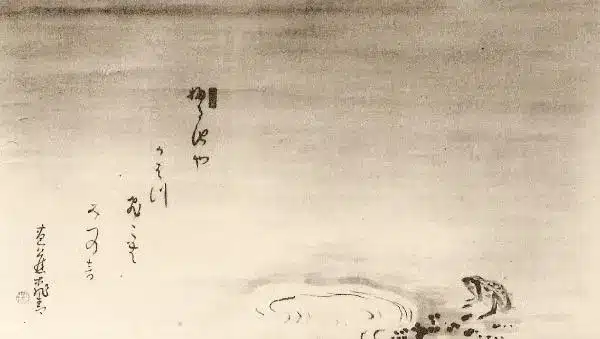Haiku is a beautiful form of poetry originating from Japan and is known for its unrhyming and specific 5-7-5 formatting.
Its elegant way of storytelling in just three lines and 17 syllables at a time has captured a wide range of admirers worldwide.
Earlier Haiku poets used to write Haiku around nature and painted a beautiful portrayal of different aspects of nature through them.
However, modern haiku is not limited to nature; it can be about animals, expression, life, love, beauty, and other topics.
In this article, we will check out the purpose of Haiku poems, how to write a haiku, some 5-7-5 haiku examples about life and other topics, and the characteristics of Haiku poems.
Let’s get started!
What is Haiku?
Haiku is a traditional short poem that has its roots in Japan. It originated in the 17th century.
These poems are known to generate natural scenery in front of you through their unique presentation. Although there can be various formats of haiku, the most commonly used is the three-line, unrhyming poem with a 5-7-5 pattern.
The 5-7-5 pattern refers to the syllables in each line. The first line contains five syllables, the second one has seven syllables, and the third one again has five syllables.
All three lines of the poem correspond to the same feeling. These poems are truly a depiction of “less is more.” In just three lines, they tend to have a generous impact on your mind.
Here are some examples of haiku:
1. An old pond
A frog jumps in –
The sound of water.
– by Matsuo Basho
2. Sweet smell of wet flowers
Over an evening garden.
Your portrait, perhaps?
– by Amy Lowell
Characteristics of Haiku Poems
As stated, Haiku poems are known for their characteristic appearance and structure. A haiku has four essential elements: Kigo, Kireji, On, Nature, and Seasons.
1. Kigo
Kigo is a word that belongs to a specific season. Haiku uses a kigo to place the poem into a specific season.
For example, “samushi” (cold) is used during the winter season, and “sakura” (cherry blossom) is used for the spring season.
2. Kireji
Kireji lends a pause to the Haiku; the literal meaning of “Kireji” is the cutting word. It is used to create a juxtaposition in the haiku.
3. On
“On” refers to the sound in haiku. A haiku has seventeen “on”; do not confuse it with the syllables, as they are counted differently.
4. Nature
Nature is yet another important characteristic of haiku. Traditional haiku was more or less about nature. Through haiku, poets expressed their delight for a particular season and how it made them feel.
Purpose of Haiku Poems
Haiku poems tend to describe a particular topic and generate emotions through it. A haiku can have multiple meanings and different interpretations for different people.
Haiku poems often evoke emotions and encourage the readers to embrace and appreciate the beauty of nature. It allows the reader to connect with the poem and captures the true essence of a scene.
The traditional haiku about nature was mainly created to celebrate the simplicity of nature. Other than these haiku poems, they also tend to impact our awareness. They make us ponder a topic and attain a deeper understanding of it. The essence of haiku is minimalism; its beauty lies in its brevity.
An important characteristic of haiku is to leave room for imagination. It tends to invite readers to interpret the poem in their own way.
This is why haikus don’t have a meaning; rather, they allow various hidden elucidations of the same poem.
How to Write a Haiku
After reading so much about haiku, if your writer’s brain is tingling to write a haiku, here are a few things you can keep in mind to give yourself a headstart.
1. Choose a Topic of Your Interest
When starting something, it’s very important to start with something that interests you so that you can easily get involved. Please choose a topic and build your knowledge around it.
2. Choose Correct Phrases
Since haiku is very short, you must choose your words wisely. Use words that have symbolic meaning. Plan your research along these lines. Think about how you can say more using fewer words.
3. Insert the “kireji” in The Proper Places
Kireji is an essential element of haiku, and you should use it meticulously. Kireji is there to create juxtaposition, so choose words that can create an impact.
4. Stick to The Structure
If you start writing a haiku, starting from the traditional 5-7-5 structure is better. However, you can go on creating variations in it. But starting from it can help you understand the basics of haiku in a better manner.
Conclusion
Haiku is a beautiful portrayal of nature through an unrhyming poem. More than a poem, a haiku is a tool to capture the true beauty of nature or life. The purpose of haiku is to generate emotions in an individual through an interplay of words.
The beauty of a haiku lies in its simplicity and the ability to bind its readers. A haiku may appear simple, but it is more than three lines. There are many variations of interpretations in haiku, and everyone can have a different interpretation.
Another important aspect of Haiku is that it offers room for imagination and helps the reader understand their perspective better.
Hope you loved reading this article; let us know in the comments!












